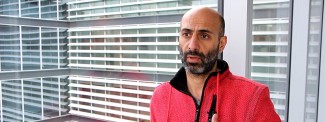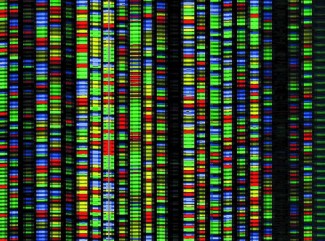Bassem Hassan’s team at Institut du Cerveau - ICM discovered a specific type of neural stem cell and deciphered a highly precise temporal control mechanism for their function during brain development in Drosophila (fruit flies). The results were published in the leading journal Developmental Cell and pave the way for advanced molecular and genetic studies focused on understanding the biology of these cells.
The development of our brain relies on a set of extremely complex mechanisms, many of which remain unexplored. One of these mechanisms enables production of the correct number of neurons, and relies on perfect spatiotemporal coordination of neural stem cells during development. This precise control of cell division and cellular differentiation into the various types of cells that make up an organ is still relatively unknown.
Over the course of development, neuronal and glial cell production originates from a series of cell divisions that start with neural stem cells:
- Asymmetric divisions create a new stem cell and a daughter cell that will become a specific type of neuron. This enables stem cell self-regeneration and a stable stem cell reserve.
- Symmetric divisions create either two cells that will differentiate, or two new stem cells. Therefore, depending on the developmental stage of the brain, these divisions enable either stem cell self-amplification to create a larger reserve, or the production of differentiated cells, such as the neurons that will form the basis of the brain.
A phase of symmetrical self-amplifying division in neural stem cells has been identified in human brain development. The mechanisms underlying and regulating this phase, however, have yet to be fully understood.
Drosophila models are a cornerstone of research into the molecular, cellular, and genetic mechanisms underlying brain development. According to current models, Drosophila neural stem cells were only undergo asymmetric divisions during brain development.
Bassem Hassan’s* team successfully identified the first example of self-amplifying neural stem cells in fruit flies that use symmetric division as well as their role in neuron increase.
«These cells can self-amplify, meaning that they can increase stem cell reserves during brain development. They may be partly responsible for the massive cortical increase observed in species with a larger brain. » explained Bassem Hassan.
« We welcome this important discovery. The work of Bassem Hassan’s team will shed valuable light on the regulation of stem cell during brain development, with significant impact on the way we think about the brain and development” Professor Alexis Brice, General Director of the Institut du Cerveau - ICM.
The research team then studied the mechanisms surrounding cell function.
Neurogenesis is regulated by a small and highly preserved set of “proneural proteins” during evolution: their role in asymmetrical division and initiation of cell differentiation is well-known.
The researchers, led by postdoctoral fellow Natalia Mora, the first author of the study, found that these stem cells are generated by temporal conversion of certain neural stem cells from an asymmetric division mode to a symmetric division mode. This conversion goes hand in hand with a change in how certain proneural proteins are expressed, and is a necessary and sufficient condition to modify division type and to generate the right number of neurons during development.
« Beyond identifying a new type of neural stem cell, our results suggest that differential, quantitative, and tightly controlled regulation of proneural proteins and their targets may act as a molecular clock that controls a series of events during development. » adds Bassem Hassan.
“This pioneering work from Bassem and his team to uncover this powerful biological switch is an important scientific discovery,” said Tom Skalak, executive director of The Paul G. Allen Frontiers Group. “It tells us that this critical timing of stem cell switches is critical in this complex system’s function, much as switches are key to complex human-designed systems like cell phones and computers. Perhaps it’s not so surprising that evolution makes use of switches for growing a big brain also.”
*Bassem Hassan, leader of the « Brain Development » team at Institut du Cerveau - ICM, is a Research Director at Inserm, Einstein Visiting Fellow at Free University of Berlin and at the Berlin Institute of Health, and an Allen Distinguished Investigator.
Sources
A Temporal transcriptional switch governs stem cell division, neuronal numbers and maintenance of differentiation. Natalia Mora, Carlos Oliva, Mark Fiers, Radoslaw Ejsmont, Alessia Soldano, Ting-Ting Zhang, Jiekun Yan, Annelies Claeys, Natalie De Geest, Bassem A. Hassan. Developmental Cell. March 22, 2018.
https://www.sciencedirect.com/science/article/pii/S1534580718301552







